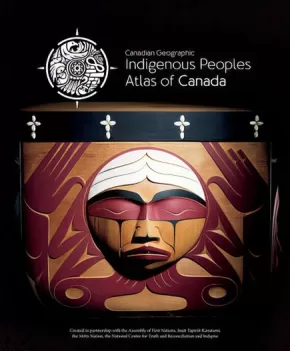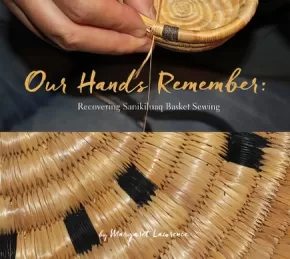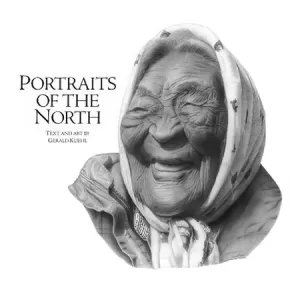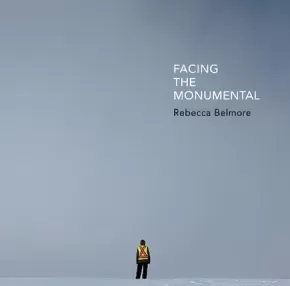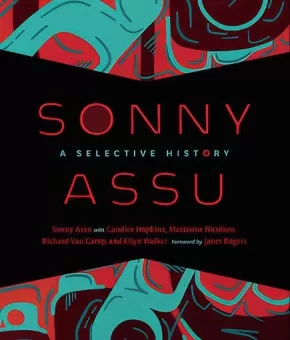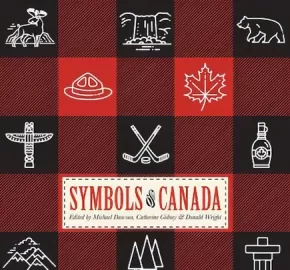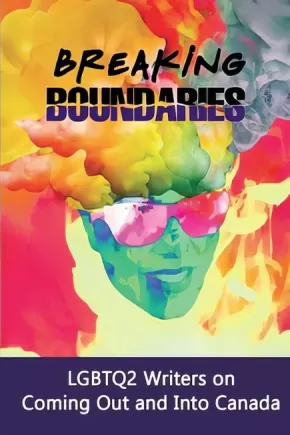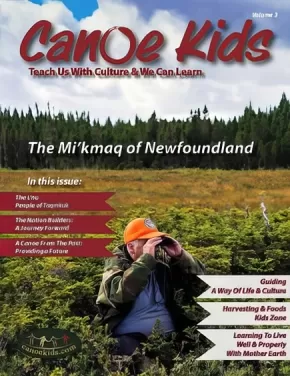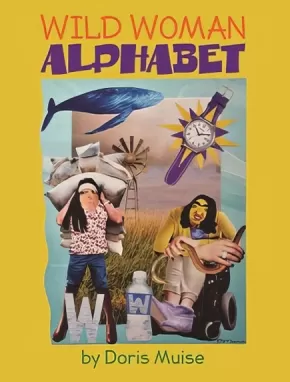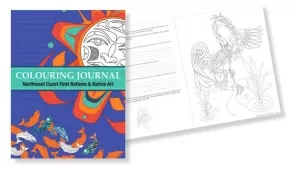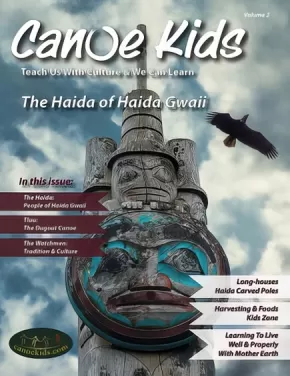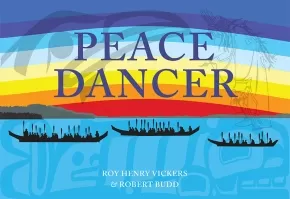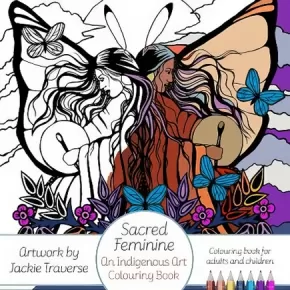
Art
76
-
90
of
114 Results;
Sort By
Go To
of 8
Indigenous Peoples Atlas of Canada
$99.99
Format:
Hardcover
Text Content Territories:
Indigenous Canadian; Métis; Inuit; First Nations;
ISBN / Barcode: 9780986751622
Synopsis:
Synopsis:
Indigenous perspectives much older than the nation itself shared through maps, artwork, history and culture.
The Royal Canadian Geographical Society, in partnership with Canada's national Indigenous organizations, has created a groundbreaking four-volume atlas that shares the experiences, perspectives, and histories of First Nations, Inuit and Métis peoples. It's an ambitious and unprecedented project inspired by the Truth and Reconciliation Commission's Calls to Action. Exploring themes of language, demographics, economy, environment and culture, with in-depth coverage of treaties and residential schools, these are stories of Canada's Indigenous Peoples, told in detailed maps and rich narratives.
This extraordinary project offers Canada a step on the path toward understanding.
The volumes contain more than 48 pages of reference maps, content from more than 50 Indigenous writers; hundreds of historical and contemporary photographs and a glossary of Indigenous terms, timelines, map of Indigenous languages, and frequently asked questions. All packaged together in a beautifully designed protective slipcase.
Educator Information
Recommended for ages 13+.
The Indigenous Peoples Atlas of Canada includes a four volume print atlas, an online atlas, an app, and more!
Additional Information
322 pages | 10.50" x 12.87"
Our Hands Remember: Recovering Sanikiluaq Basket Sewing
$24.95
Format:
Paperback
Text Content Territories:
Indigenous Canadian; Inuit;
ISBN / Barcode: 9781772271645
Synopsis:
Synopsis:
Sanikiluaq, a small Inuit community in the Belcher Islands region of the Far North, has a long history of artistic output. But as the demand for stone carvings grew, grass basket sewing—once a traditional skill for Inuit women—faded from the community consciousness. That was until a group of women, including educator and artist Margaret Lawrence, came together to renew the lost art of basket sewing.
In Our Hands Remember: Recovering Sanikiluaq Basket Sewing, Lawrence guides readers through creating their own grass baskets in the unique style of the Sanikiluaq region with step-by-step instructions and photographs. From tips on preparing the grass and forming even coils to the different types of embellishments, this book is accessible to all skill levels.
Additional Information
120 pages | 9.00" x 8.50" | Colour Photographs
Portraits of the North
$29.95
Artists:
Format:
Paperback
Text Content Territories:
Indigenous Canadian; First Nations; Anishinaabeg; Oji-Cree; Ojibway; Cree (Nehiyawak); Dene; Métis;
ISBN / Barcode: 9781988182414
Synopsis:
Synopsis:
This gorgeous book offers an incomparable glimpse into the experiences and history of more than one hundred First Nations and Métis elders from Canada’s North —“the last generation born on the land.” These stunning graphite pencil portraits are rendered with love, respect, and painstaking detail, along with gripping intimate profiles assembled from oral accounts and anecdotes. Their poignant facial features, lines, and creases, weathered by the harsh outdoors and a lifetime of challenges, are like badges of their remarkable achievements, sustained resolve, inspired patience, and deep-set defiance to the hardships their people have endured for generations. The masterful realism of Kuehl’s work helps uncover the tales of these seasoned individuals—their many triumphs and trials revealing in turn a greater portrait of life in the communities of Northern Canada, a compelling homage, and an enduring historical legacy. The portraits capture images of Cree, Ojibway, Oji-Cree, Dene and Métis peoples.
Additional Information
236 pages | 10.03" x 10.03"
Rebecca Belmore: Facing the Monumental
$40.00
Artists:
Editors:
Format:
Hardcover
Text Content Territories:
Indigenous Canadian; First Nations; Anishinaabeg; Ojibway; Lac Seul;
ISBN / Barcode: 9781773100968
Synopsis:
Synopsis:
Facing the monumental issues of our time.
In a 2012 performance piece, Rebecca Belmore transformed an oak tree surrounded by monuments to colonialism in Toronto's Queens Park into a temporary "non-monument" to the Earth.
For more than 30 years, she has given voice in her art to social and political issues, making her one of the most important contemporary artists working today. Employing a language that is both poetic and provocative, Belmore's art has tackled subjects such as water and land rights, women's lives and dignity, and state violence against Indigenous people. Writes Wanda Nanibush, "by capturing the universal truths of empathy, hope and transformation, her work positions the viewer as a witness and encourages us all to face what is monumental."
Rebecca Belmore: Facing the Monumental presents 28 of her most famous works, including Fountain, her entry to the 2005 Venice Biennale, and At Pelican Falls, her moving tribute to residential school survivors, as well as numerous new and in-progress works. The book also includes an essay by Wanda Nanibush, Curator of Indigenous Art at the AGO, that examines the intersection of art and politics.
Rebecca Belmore is one of Canada's most distinguished artists. She has won the Hnatyshyn Award (2009), the Governor General's Award in Visual and Media Arts (2013), and the Gershon Iskowitz Prize (2016). A member of Lac Seul First Nation, she was the first Aboriginal woman to represent Canada at the Venice Biennale. She has also participated in more than 60 one-person and group exhibitions around the world.
Additional Information
132 pages | 10.25" x 10.25" | 198 Illustrations
Sonny Assu: A Selective History
$34.95
Format:
Paperback
Text Content Territories:
Indigenous Canadian; First Nations; Kwakwaka'wakw (Kwakiutl); Ligwilda'wx (Laich-kwil-tach);
ISBN / Barcode: 9781772031706
Synopsis:
Synopsis:
A stunning retrospective highlighting the playfulness, power, and subversive spirit of Northwest Coast Indigenous artist Sonny Assu.
Through large-scale installation, sculpture, photography, printmaking, and painting, Sonny Assu merges the aesthetics of Indigenous iconography with a pop-art sensibility. This stunning retrospective spans over a decade of Assu’s career, highlighting more than 120 full-colour works, including several never-before-exhibited pieces.
Through analytical essays and personal narratives, Richard Van Camp, Marianne Nicolson, Candice Hopkins, and Ellyn Walker provide brilliant commentary on Assu’s practice, its meaning in the context of contemporary art, and its wider significance in the struggle for Indigenous cultural and political autonomy. Exploring themes of Indigenous rights, consumerism, branding, humour, and the ways in which history informs contemporary ideas and identities, Sonny Assu: A Selective History is the first major full-scale book to pay tribute to this important, prolific, and vibrant figure in the Canadian contemporary art world.
Reviews
"Educators and students will find numerous access points and opportunities to examine our nation's beliefs, actions, words, and legislation. [This book] also invites readers to knowledgeably and compassionately consider how we can reconcile all that has been with all that can be"—Canadian Indigenous Books for Schools 2018-2019
"Framed by contributions from some of our brightest Indigenous intellectuals, Sonny Assu’s canvas is more than an examination of how Indigenous Peoples respond to the Canadian experience. His witty and gentle hand offers Canada a mirror to consider its own scarred identity."—Michael Nicoll Yahgulanaas
“This brilliant book not only provides readers with an overview of the career of one of Canada’s most important artists but also links his development to the contemporary creative practices of First Nations artists in BC politics and history—the intersection of stories with visual expression. All this unveils historical truths and artistic insights that elevate Sonny Assu to greatness." —Dr. Ron Burnett, Order of Canada, Order of BC. President and vice-chancellor, Emily Carr University of Art and Design
Educator Information
Recommended for Grades 9-12 for these subjects: Art Education, Social Justice, Social Studies.
Additional Information
224 pages | 8.50" x 10.00"
Symbols of Canada
$37.95
Editors:
Format:
Paperback
Text Content Territories:
Indigenous Canadian;
ISBN / Barcode: 9781771133715
Synopsis:
Synopsis:
From Timbits to totem poles, Canada is boiled down to its syrupy core in symbolic forms that are reproduced not only on t-shirts, television ads, and tattoos but in classrooms, museums, and courtrooms too. They can be found in every home and in every public space. They come in many forms, from objects—like the red-uniformed Mountie, the maple leaf, and the beaver—to concepts— like free healthcare, peacekeeping, and saying "eh?".
But where did these symbols come from, what do they mean, and how have their meanings changed over time? Symbols of Canada gives us the real and surprising truth behind the most iconic Canadian symbols revealing their contentious and often contested histories.
With over 100 images, this book thoroughly explores Canada's true self while highlighting the unexpected twists and turns that have marked each symbol's history.
Reviews
“What do timbits, the beaver and the blue beret all have in common? They are all iconic symbols of Canadian identity and they are all subjects of this amusing, insightful book. Along with poutine, totem poles, roll up the rim and plenty more. Pop culture meets serious history. What better way to understand the origins of our national dreams, eh?” —Daniel Francis, author of Selling Canada: Three Propaganda Campaigns that Shaped the Nation
"Sharp, insightful and deeply funny: At once celebrating and critiquing symbols within Canadian identity, contributors are invariably witty and sometimes barbed, creating a rich, quick and satisfying reading experience." – Ottawa Life Magazine
"The beaver may be a rodent, the north merely a compass point, and the paternity of poutine still undecided but these, among many, signs and symbols define, sometimes divide, and frequently distinguish Canadians. While worthy of any library, this insightful, informative and entertaining collection proves that Canadiana, demystified, de-mythed and de-kitsched, can go “coffee table”. Solid and original scholarship, superb illustrations, concise and punchy writing combine with (sometimes self-deprecating) humour." – Jane Koustas, professor of modern languages, Brock University
"Symbols of Canada is a path-breaking book. It unravels the real origins and cultural significance of national symbols such as the “Mountie” or the Maple Leaf that are widely popular but little understood. This book will prove informative not only for Canadians but for anyone interested in the issue of national identity." – John Bodnar, Department of History, Indiana University
"Symbols of Canada challenges us to think about why particular stories, activities, landscapes, and events are invested with national meaning. From colonialism to consumerism, the contributors to this collection deftly connect the past with the present, and demonstrate how national symbols are made, re-made, and sometimes forgotten." – James Opp, professor of history, Carleton University and co-editor of Placing Memory and Remembering Place in Canada
"Nations exist through their symbols. Dawson, Gidney, and Wright have drawn together an impressive array of scholars to reveal – with insight, flair, shrewd judgement, humour, and unexpected serendipity – how Canadian national symbols do their work." – Richard White, Department of History, University of Sydney
Educator Information
Table of Contents
Introduction - Michael Dawson, Catherine Gidney, and Donald Wright
1. Beaver - Colin M. Coates
2. Canoe - Jess Dunkin
3.Totem Pole - John Sutton Lutz
4. North - Donald Wright
5. Lacrosse - Gillian Poulter
6. Hockey - Kristi Allain
7. National Anthem - Michael Dawson and Catherine Gidney
8. Flag - Donald Wright
9. Fleur-de-lys - Alan Gordon
10. Maple Syrup - Elizabeth L. Jewett
11. Canadian Pacific Railway - Bill Waiser
12. Mountie - Michael Dawson
13 .Dollard des Ormeaux - Patrice Groulx
14. Laura Secord - Cecilia Morgan
15. Vimy Ridge - Ian McKay and Jamie Swift
16. Peacekeeper - Kelly Ferguson
17. Anne of Green Gables - Michael Dawson and Catherine Gidney
18. Niagara Falls - Karen Dubinsky
19. Universal Healthcare - Cheryl Krasnick Warsh
20. Eh? - Steven High
21. Poutine - Caroline Durand
22. Tim Hortons - Michael Dawson and Catherine Gidney
Acknowledgements
Photo Credits
This work is both a "coffee table" type of book but also a collection of essays on various motifs that are often used to represent Canada.
Additional Information
256 pages | 9.25" x 8.75"
Text Content Note: While Indigenous content is found in this work, it is not the sole focus and is limited.
Breaking Boundaries: LGBTQ2 Writers on Coming Out and Into Canada
$13.95
Editors:
Format:
Paperback
ISBN / Barcode: 9780994730275
Synopsis:
Synopsis:
An anthology of stories and poetry written by Canadian LGBTQ2 authors who are immigrants, refugees, or Canada-born.
“What does it mean to be LGBTQ2 in Canada? The only possible answer to that question is one given in many voices. That is exactly what this book offers. There is struggle in these stories and poems, but there is also strength and resilience, compassion and determination. Woven together these voices leave me with a sense of hopefulness: a belief that the creativity and fierce commitment of our community will carry us forward as we work to create a Canada that lives up to the dream of freedom and safety it represents to so many people around the world.” — Robin Stevenson, author of Pride: Celebrating Diversity and Community
Review
The anthology pieces are diverse with authors who identify as Lesbian, Gay, Bisexual, Transgender and 2-Spirited. It also includes stunning artwork by LGBTQ artists and allies. — Rainbow Refugee Society
Authors & Artists
Authors in this anthology include Teryl Berg, Kyle Chen, Wendy Judith Cutler, Corrie Hope Furst, Kevin Henry, Anne Hofland, Chantal Hughes, Masaki Kidokoro, Dale Lee Kwong, Austin Lee, JL Lori, Eka Nasution (narrator), Adam Nixon, Rainer Oktovianus (narrator), Gail Marlene Schwartz, Caelan Sinclair, LS Stone, Sosania Tomlinson, E.T. Turner, and Hayley Zacks.
Artwork by Joni Danielson, Wokie Clark Fraser, Austin Lee, Trinity Lindenau, and Rainer Oktovianus.
Additional Information
146 pages | 6.00" x 9.00"
Edited by Lori Shwydky
This book contains memoirs, stories, poems, and artwork, which is why it appears in a variety of categories, such as both Fiction and Non-fiction, on our website.
Canoe Kids Volume 3: The Mi'kmaq of Newfoundland
$22.95
Format:
Paperback
Text Content Territories:
Indigenous Canadian; First Nations; Mi'kmaq;
ISBN / Barcode: 9781926852102
Synopsis:
Synopsis:
Canoe Kids Vol. 3 The Mi'kmaq of Newfoundland (Ktaqamkuk) is the third issue of a 24 edition series designed as family books for kids all ages. This eight to ten year project will see the Canoe Kids Team embed with 24 Peoples. The mandate for the full-colour book (150+ full colour high res photographs) is Exploring Indigenous Cultures through Authentic Indigenous Voices. The publication balances culture, equity and the environment in a beautiful mix that reminds the reader of the pictorial quality of National Geographic with a more in depth editorial content.
This third issue (in a series of 24) focuses on the Mi'kmaq of the Newfoundland and north Atlantic coast. In 150 pages the reader is introduced to the Mi'kmaq People who kindly assisted the Canoe Kids staff by allowing access to their traditional territory. Canoe Kids acknowledges the generosity of the Council of Flat Bay and Conn River.
Educator Information
Each edition follows a common theme and features:
1: Compelling and beautiful pictorials that draw you into the stories and place of the featured community
2: The story of the vessel used by the featured Peoples
3: Art and Food
4: A Kids Zone
5: Resources for kids, parents and educators
6: Stories by and of the featured Peoples in each edition
7: Extraordinary pictures of the lives, land and waters of the featured Peoples
The materials are equal parts cultural and environmental. The latter is a natural offshoot of the former as Indigenous cultures are wrapped around and through the lands and water and sky both spiritually and from a harvesting and gathering perspective. Indigenous Peoples have long been the caretakers of Mother Earth and we can all learn from these experts whose message is perhaps more relevant today than ever.
Indigenous communities have always included the little ones in their circles and talk and teach to them in the same way they talk and teach to young adults and adults. Canoe Kids decided to follow that inclusive way of life for the layout of each book. Rather than create editions for different age groups, Canoe Kids decided to have one book for all ages.
K through 3 use Canoe Kids to read beautiful and ancient stories. There is beautiful original art to explore and a Kids Zone with puzzles, word searches, colouring, cutouts and more. Mid grades use the materials to study the culture, food and wildlife of the featured cultures. Grades 8 through 12 use stories that are more in depth from Dr. David Suzuki about the environment and there are discussion articles about living well and properly with Mother Nature as well as articles about the history and geography of the featured People.
Additional Information
150 pages | 8.50" x 11.00"
Wild Woman Alphabet
$24.95
Artists:
Format:
Hardcover
Text Content Territories:
Indigenous Canadian;
ISBN / Barcode: 9781926886480
Synopsis:
Synopsis:
"A bunch of Wild women once wandered this land and thought that their dinners had gotten too bland. They set out in search of fine foods they could get and ate up the sounds of the whole alphabet."
This quirky ABC book for older children and adults has Indigenous themes and unusual collaged illustrations. Each letter of the alphabet presents a short story designed to cover teaching objectives ranging from letter recognition, letter sounds, rhyming, word families, vocabulary, consonant blending, contractions, compound words and more.
Educator Information
Recommended for Grades K-7 for these subject areas: Art Education, English Language Arts.
Additional Information
72 pages | 8.50" x 11.00"
FLASH SALE! Colouring Journal: Northwest Coast First Nations & Native Art
$8.25 $11.00
Artists:
Format:
Paperback
Text Content Territories:
Indigenous Canadian; Indigenous American;
ISBN / Barcode: 9781554764792
Synopsis:
Synopsis:
Nurture your spirit! Slow down and explore colouring while learning about the Indigenous Peoples and cultures of the Pacific Northwest. Find your own magical and mysterious story woven within these pages." - Melaney Gleeson-Lyall, Musqueam, Coast Salish
Colouring Journal: Northwest Coast First Nations & Native Art features 14 journal pages and 16 original art designs from different Northwest Coast First Nations and Native American artists that take the reader/drawer through a journey of self-reflection and design. The images and text in this book are the work of various Indigenous artists of the Pacific Northwest.
Inside Colouring Journal, you will find pages explaining the significance and symbolism of different animals and supernatural beings, followed by questions and space to journal. Facing the journalling pages are beautifully detailed colouring pages to complement the questions for reflection. Find your own magical journey woven within these pages.
Features:
- Features 16 original art designs.
- Printed in Canada using non-toxic, vegetable-based ink, and water-based coating.
- 32 pages; measures 8.5" x 11".
Canoe Kids Volume 2: The Haida of Haida Gwaii
$22.95
Format:
Paperback
Text Content Territories:
Indigenous Canadian; First Nations; Haida;
ISBN / Barcode: 9781926852089
Synopsis:
Synopsis:
Canoe Kids Vol. 2 The Haida is the second issue of a 24 edition series designed as family books for kids all ages. This eight-year project will see the Canoe Kids Team embed with 24 Peoples the publication designed as a family book for kids all ages. The mandate for the full-colour book (197 full colour high res photographs) is Exploring Indigenous Cultures through Authentic Indigenous Voices. The publication balances culture, equity and the environment in a beautiful mix that reminds the reader of the pictorial quality of National Geographic with a more in depth editorial content.
This second issue focuses on the Haida Nation of Haida Gwaii. In 165 pages the reader is introduced to the Haida People who kindly assisted the Canoe Kids staff by allowing access to Haida territory. Canoe Kids acknowledges the generosity of the Council of Haida Nation, the Haida Museum and the Haida Heritage Centre.
Educator Information
Each edition follows a common theme and features:
1: Compelling and beautiful pictorials that draw you into the stories and place of the featured community
2: The story of the vessel used by the featured Peoples
3: Art and Food
4: A Kids Zone
5: Resources for kids, parents and educators
6: Stories by and of the featured Peoples in each edition
7: Extraordinary pictures of the lives, land and waters of the featured Peoples
The materials are equal parts cultural and environmental. The latter is a natural offshoot of the former as Indigenous cultures are wrapped around and through the lands and water and sky both spiritually and from a harvesting and gathering perspective. Indigenous Peoples have long been the caretakers of Mother Earth and we can all learn from these experts whose message is perhaps more relevant today than ever.
Indigenous communities have always included the little ones in their circles and talk and teach to them in the same way they talk and teach to young adults and adults. Canoe Kids decided to follow that inclusive way of life for the layout of each book. Rather than create editions for different age groups, Canoe Kids decided to have one book for all ages.
K through 3 use Canoe Kids to read beautiful and ancient stories. There is beautiful original art to explore and a Kids Zone with puzzles, word searches, colouring, cutouts and more. Mid grades use the materials to study the culture, food and wildlife of the featured cultures. Grades 8 through 12 use stories that are more in depth from Dr. David Suzuki about the environment and there are discussion articles about living well and properly with Mother Nature as well as articles about the history and geography of the featured People.
Additional Information
165 pages | 8.50" x 11.00"
Colour & Draw: Northwest Coast Native Formline
$11.00
Artists:
Format:
Paperback
Text Content Territories:
Indigenous Canadian; First Nations; Indigenous American;
ISBN / Barcode: 9781554764785
Synopsis:
Synopsis:
Native Elements - Colour & Draw: Northwest Coast Native Formline Colouring Book
Explore the traditional design styles of the Pacific Northwest with the Native Elements Colour & Draw: Native Northwest Coast Formline Colouring Book. This book features 32 pages of colouring space and blank sketching space.
Join in as artists from the Pacific Northwest use Indigenous formline techniques to create authentic interpretations of Pacific Northwest animals. Each artist uses their own style of authentic Northwest Coast formline to create various interpretations of the animals presented on each page.
Features:
- Features the artwork of over 10 indigenous artists.
- Includes both colouring pages and blank sketching pages.
- Printed in Canada using non-toxic, vegetable-based ink, and water-based coating.
- 32 pages; measures 8.5" x 11".
- One page at the beginning of the book with words and insights from the artists about Indigenous art and formline.
Additional Information
This is a colouring book for adults and young adults; however, intermediate and secondary students would still enjoy colouring in the animal drawings and creating their own drawings on the blank pages provided!
Peace Dancer
$19.95
Text Content Territories:
Indigenous Canadian; First Nations; Tsimshian (Ts'msysen);
ISBN / Barcode: 9781550177398
Synopsis:
Synopsis:
The children of the Tsimshian village of Kitkatla love to play at being hunters, eager for their turn to join the grown-ups. But when they capture and mistreat a crow, the Chief of the Heavens, angered at their disrespect, brings down a powerful storm.
The rain floods the Earth and villagers have no choice but to abandon their homes and flee to their canoes. As the seas rise, the villagers tie themselves to the top of Anchor Mountain, where they pray for days on end and promise to teach their children to value all life. The storm stops and the waters recede. From that point on, the villagers appoint a chief to perform the Peace Dance at every potlatch and, with it, pass on the story of the flood and the importance of respect.
With eighteen new illustrations from Roy Henry Vickers and exceptional narrative, Peace Dancer will delight readers of all ages and add to the collection of global flood stories.
Reviews
"Parents and teachers will enjoy sharing Peace Dancer with children. Highly recommended." — Dr. Gregory Bryan, CM Magazine, October 2016
Educator & Series Information
This book is part of the Northwest Coast Legends series.
This book is part of the Northwest Coast Legends series.
Other books in this series include:
Raven Brings the Light
Cloudwalker
Orca Chief
Peace Dancer
Raven Brings the Light
Cloudwalker
Orca Chief
Peace Dancer
Recommended for ages 3 to 6.
Additional Information
40 pages | 12.00" x 8.25"
Sacred Feminine: An Indigenous Art Colouring Book
$24.00
Artists:
Format:
Paperback
Text Content Territories:
Indigenous Canadian;
ISBN / Barcode: 9781552669198
Synopsis:
Synopsis:
Colouring book for adults and children.
Sacred Feminine is a colouring book by Anishinaabe artist Jackie Traverse.
The beautiful and intricate works of art within depict images of strength, resilience, and empowerment. With each image, the artist explains the symbolism and meaning represented. The first of its kind, Sacred Feminine is intended to heal and educate readers and colourers of all ages.
Additional Information
64 pages | 10.00" x 8.00"
Haida: The Art and Culture of Haida Gwaii
$12.95
Format:
Paperback
Text Content Territories:
Indigenous American; Alaska Native; Haida; Indigenous Canadian; First Nations; Haida;
ISBN / Barcode: 9780888396211
Synopsis:
Synopsis:
The Haida are islanders first and foremost - a people apart. Discover the source of their distinctive culture and the inspirations for their arts.
Sort By
Go To
of 8

